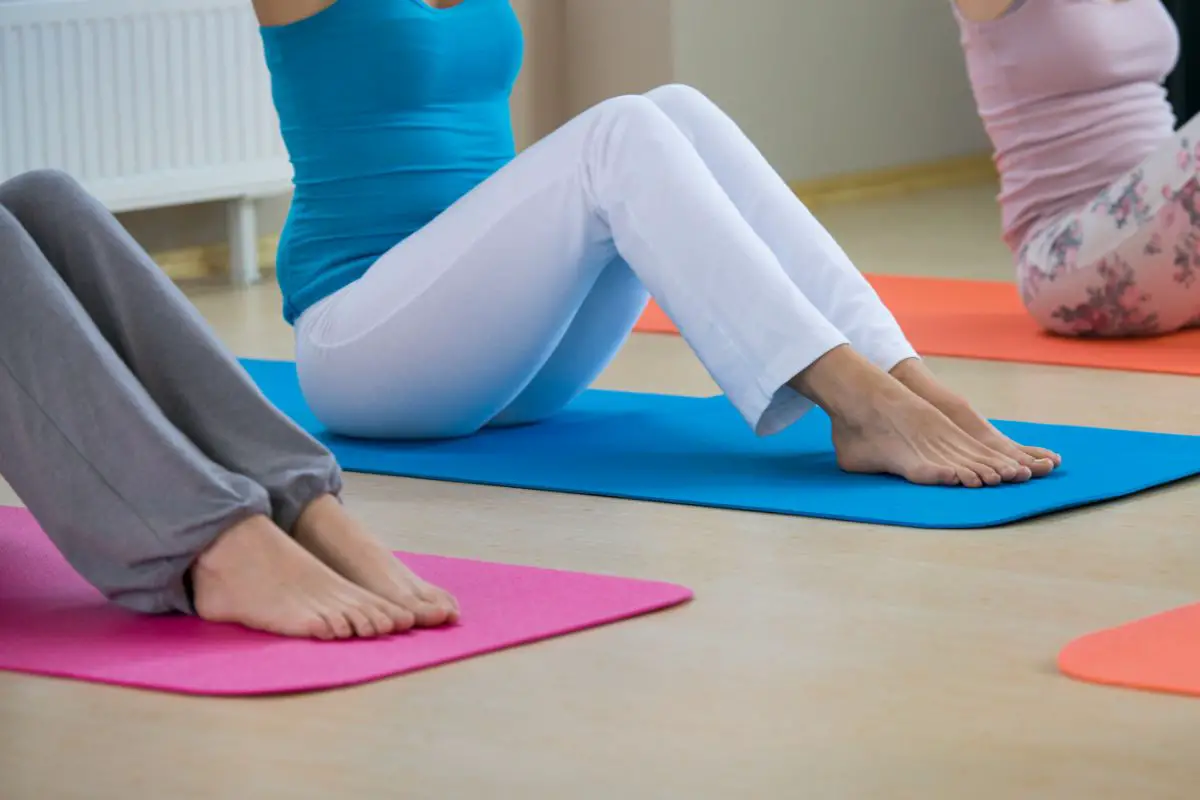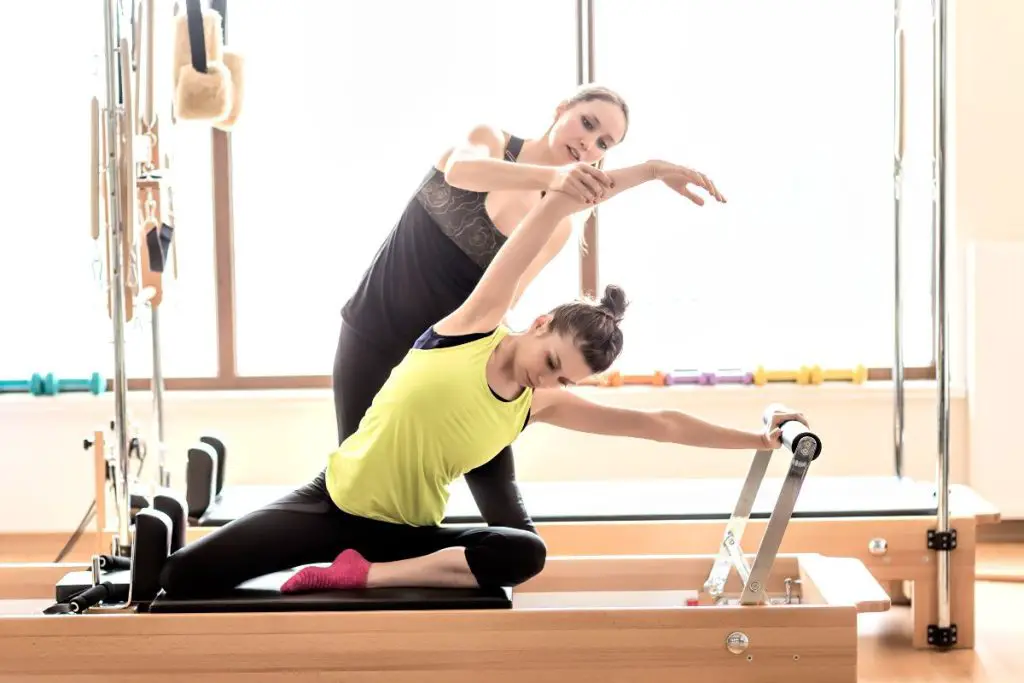8 Things To Know Before You Take Pilates Classes (Important)
If you’ve never tried Pilates before, you might find the first few classes uncomfortable in the beginning.
A lot of people find this prospect intimidating, unsure of whether to give the activity a go.
Pilates isn’t just for supermodels and fitness enthusiasts!
It has so many health benefits, like improving your posture, balance, and stress levels.
Both mat and reformer Pilates offer the same benefits.
Pilates is an incredible workout, and as it’s low-impact, it’s suitable for a large range of ages, sizes, and fitness levels!
If you are a Pilates newbie, it can be helpful to know a few things before you start attending classes, or practicing some videos at home.
We’ll cover eight important things Pilates beginners should know before trying the activity.
Understanding these points can help you feel more prepared before you first head to class.
Keep reading to find eight things you should know before starting Pilates!
There Are Two Types Of Pilates Classes
Pilates classes are generally classified into two categories, mat or reformer classes.
Mat classes are practiced on a mat that’s a little thicker than a yoga mat.
This helps to cushion and support any pressure points during the session. Reformer classes use a device called a reformer.
This consists of a sliding platform with springs, pulleys, and a stable foot bar.
Make sure you know which class you are attending before signing up for a class.
Both mat and reformer pilates involve smooth, controlled, movements instead of a set of muscle workouts.
The muscles work against gravity, and if you are using a reformer, against the added resistance from the bands.
The aim is to isolate and strengthen the muscles.
Try to take your time with the movements, concentrate on the task, and maintain an even breathing pattern.
Some other classes, like Brooklyn Bodyburn or SLT, use movements that are inspired by Pilates.
These aren’t traditional Pilates classes, but they may offer a lot of similar benefits.
No matter which class you first start with, ensure that your instructor knows that you are a beginner.
They will then keep monitoring your progress through class and modify your movements if necessary.
Other Forms Of Pilates Equipment
Other than a mat, Pilates mat classes don’t usually need any pieces of equipment. Other classes, however, may require additional gear.
Some common pieces are the high chair, spine corrector, and a Magic Circle, which looks like a ring placed between the legs to add resistance.
These tools aren’t normally used in beginner mat classes, but they may be required in reformer sessions.
If you are a beginner, you might want to take some private lessons and learn how to use these tools safely before a group session.
Your Muscles Will Burn
Pilates doesn’t involve high-intensity movements, like jumping squats or HIIT training, but bodyweight workouts can quickly become difficult.
For instance, the Pilates Hundred move is a core-focused activity that will make the abdominals burn, despite not needing a lot of movement.
Trained instructors should provide adjustments or modifications so you can carry out any movements with proper form.
As mentioned above, make sure to tell your instructor that you are a beginner.
These small, focused movements mean that you will isolate and work the muscle groups that each exercise is intended to work.
For this reason, you will often feel sore after your workout, and the during the next day.
If you notice soreness in the beginning, don’t panic.
As you consistently practice Pilates, your body will become used to the activity as you progress.
Soreness means that your muscles are working in new ways or that you are activating muscle groups that aren’t worked out often.
Pilates Uses Many Different Muscles
Pilates may focus on core movements, but it doesn’t just work out your abs.
Pilates works out the core, which consists of the abdominal muscles, as well as the hips, trunk, back, and inner and outer thighs.
Pilates is a full-body workout, so you may notice soreness in areas other than the abs.
Beginner Classes Use Many Common Moves

Pilates beginner classes often use a fixed set of movements. These often are:
- The Roll Up – a precise, slow movement that strengthens the abs and stretches the back and spine.
- The Hundred – breathing work that focuses on core strength and stability
- Leg Circles – strengthens and stabilizes the core and hips
- Series of Five – a group of movements that work out the back and abdominal muscles
- Rolling like a ball – opens up the back muscles and massages the spine
Wear Fitted Clothing And Socks
You might prefer to wear looser-fitting clothing, but it’s best to wear fitted workout clothes for Pilates.
This allows the teacher to notice your movements and ensures your clothing won’t get trapped in the equipment or springs.
It’s best to avoid shorts too. Pilates involves a lot of exercises that involve raising the legs above while you are lying down.
To prevent your shorts from riding up, wear leggings or capris. Footwear will depend on the class you are taking.
You will usually wear socks or be barefoot, but check with your studio’s guidelines beforehand.
You can find this on their website, or ask the reception when you check-in.
If you do want to wear socks, choose a pair with rubber soles, as this will prevent slipping on your machine or mat.
If you are using a reformer, socks or bare feet will help you move in and out of the machine’s straps without difficulty.
You Might Not Understand The Lingo
All workouts, from CrossFit to barre, use specific terminology.
Pilates involves several words that you might be unfamiliar with in the beginning.
The ‘powerhouse’ is a common word, but it just refers to the center of your body.
The power needed to perform moves originates from this core. ‘Peel through the spine’ is another popular phrase.
This simply means moving gradually through each of the different vertebrae.
As you become more accustomed to the classes, look at the regulars if you don’t understand anything.
Try to find a position to the side or in the middle of all the action.
This will give you a clear view of the instructor and other participants.
Pilates Works Best As Part Of A Fitness Plan
Even if you’re set on making Pilates part of your lifestyle, don’t plan on going to class every day.
The body will need a day to rest and recover from the exercise.
If you don’t give yourself any rest days, your muscles won’t have the time to become stronger.
This can lead to muscle fatigue and injury later down the line.
Pilates is a great workout, but it works best alongside other forms of activity.
Make sure that your fitness routine consists of other workouts, like lifting weights, swimming, yoga, or running.
You’ll find that the better balance, muscle strength, and alignment gained from Pilates helps you progress further with other forms of exercise.
The Bottom Line
Pilates is an amazing workout that offers many health benefits.
It’s suitable for beginners, but it’s easy to feel uncomfortable if you aren’t accustomed to the movements.
Make sure that you read over the points listed above before your first session, as they can help you feel more prepared.
You might not feel confident in the beginning, but try to stick with Pilates.
As long as you are consistent, you’ll notice your abilities and fitness level improving with every class!





